10 Trees That Will Add Value To Your Home – According To Experts
Attractive trees boost a home's curb appeal, and offer shade and privacy. They can also increase a property's value by up to 15 percent.
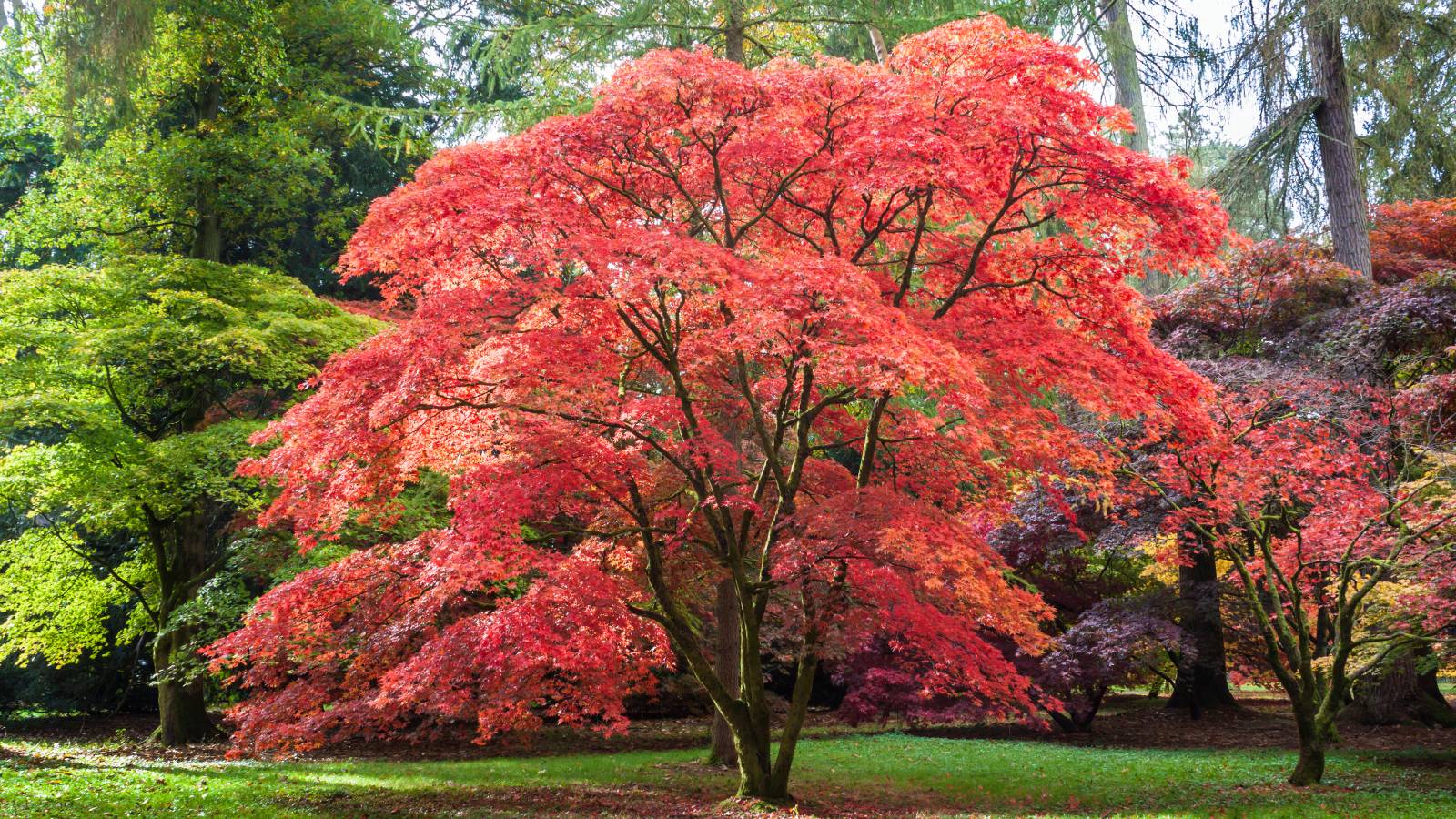

Amy Draiss
Attractive, mature trees boost a property's curb appeal, and offer shade and privacy for residents.
It is no secret that good landscaping increases a home’s value – and trees are an essential element of any design. According to Arborist News, having large established trees in yards can increase property value by as much as 15 per cent.
However, trees also contribute to a property’s ecological value, helping to clean the air and provide a home for local wildlife.
‘Trees add an unquantifiable environmental value by creating habitat for wildlife, such as birds,’ says Zander Caruso, plant, tree, and gardening expert at Barton Springs Nursery.
The good news is that most attractive mature trees will add value to a home. The exception is where they are planted too close to the house or have invasive roots, such as American elm and weeping willow. Yet, there are certain trees that will add more value than others.
Maintenance, however, is key: ‘When the goal of planting trees is to increase your property value, it's important to keep them in good shape. Dead, rotting, or unstable trees will make prospective buyers run for the hills,’ says Veronica Sparks, owner of Homesteading Suburbia.

Find the perfect tree or shrub for your yard! Explore expert-curated plants that will add lasting value to your landscape.
Trees That Increase Property Value
Large shade trees are particularly prized by homebuyers. ‘These not only add aesthetic value, but they can also reduce energy bills. They make the home cooler in the summer and giving the HVAC system a bit of a rest,’ says Veronica.
Gardening tips, videos, info and more delivered right to your inbox!
Sign up for the Gardening Know How newsletter today and receive a free copy of our e-book "How to Grow Delicious Tomatoes".
‘You just have to find the right balance when choosing a location to plant the tree. Too close to the house and you risk foundation issues due to the roots; too far away, and you may lose the shade benefits.’
Beautiful flowers, fall color, and fragrance are also value-adding features. But location is everything.
‘When selecting trees, it's important to consider the specific needs of each species and the conditions of your property. This will ensure they grow and thrive, thereby maximizing the value they add to your home,’ says Gene Caballero, landscaping expert and co-founder of GreenPal.
To achieve this, you must abide by your USDA hardiness zone, and plant for your soil type.
So, what trees should you add to your property to increase its value?
1. Oak
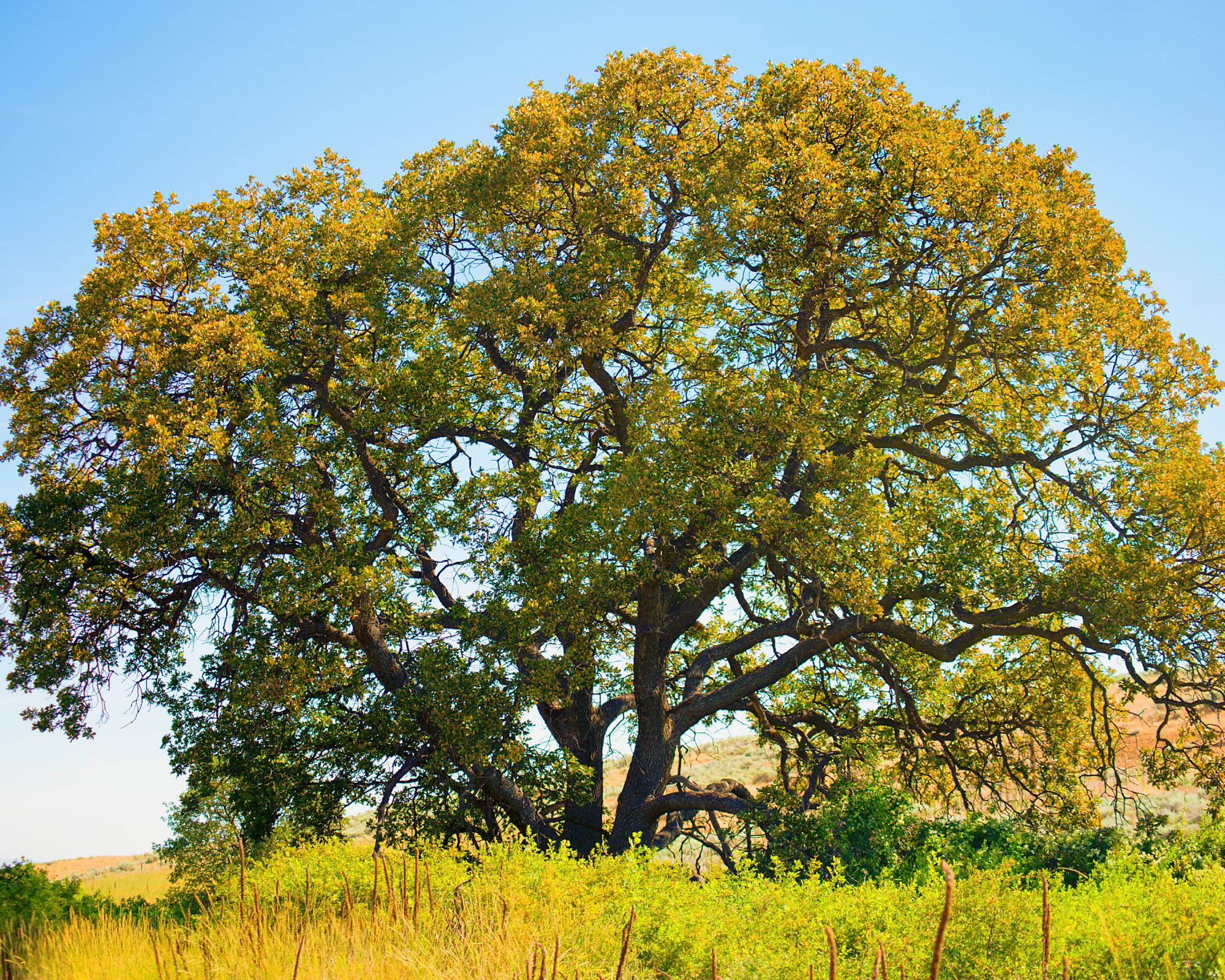
‘Mature oak trees are highly valued in real estate – prized for their longevity and strength,’ says Gene Caballero.
Oak trees have large canopies which offer extensive shade. This can reduce cooling costs in the summer and make outdoor spaces more comfortable.
The importance of oak trees cannot be overstated. Many experts agree that it is the best tree to plant to bolster the ecosystem.
‘Oaks can live for hundreds of years with proper care, and there is a species for every situation and state,’ says Zander Caruso. ‘Whether it be soil type, climate and size, oaks are a multifaceted plant. The value of an oak only goes up as it ages.’
Popular options include the North American native white oak (Quercus alba), which is a great option for USDA zones 3-9. Meanwhile the live oak tree (Quercus virginiana) is a familiar sight in southern and central states, thriving in zones 7-10.
However, these trees will take many years to become established. A faster-growing option is the northern red oak (Quercus rubra) which is suitable for zones 3-8 and grows at a rate of 2ft per year.
2. Crepe myrtle
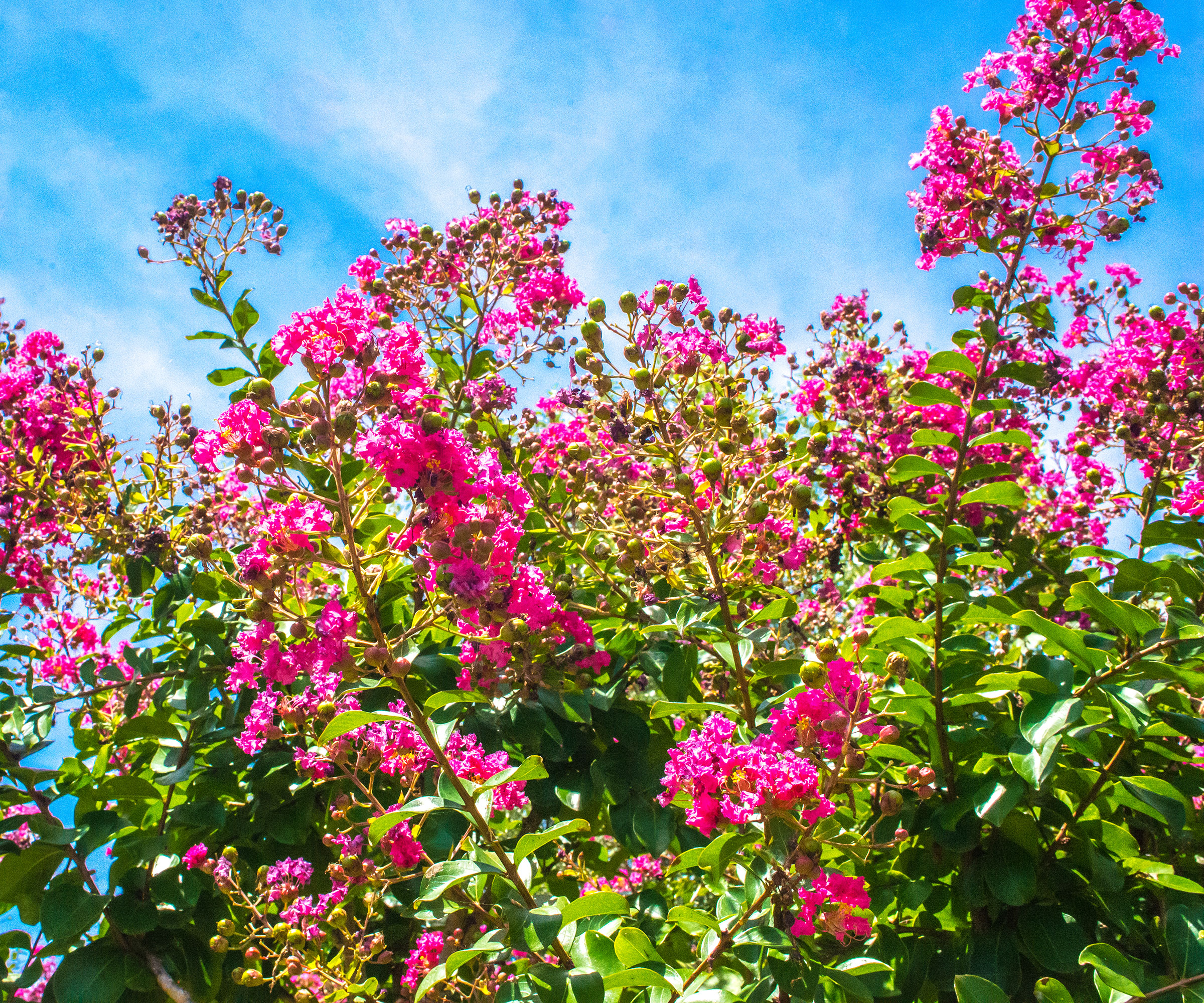
A feature of many southern landscapes, the crepe myrtle is a stunning tree that offers year-round interest.
‘Crepe myrtles are the ever-blooming heroes of the tree world,’ says Tom Su, landscape expert and owner of Lawn Edging.
’They have colorful flowers and peeling barks that are year-round spectacles, taking any garden’s appeal to another level.
Growing crepe myrtle trees is easy in suitable areas. They are hardy in USDA zones 9 down to 7, with some varieties surviving in zone 6.
‘They are indeed beauties who love and can stand up to the heat of the sun,’ adds Tom. ‘Once established, they tolerate drought and are low-maintenance plants. Keep them in good shape by pruning them regularly.
You can grow crepe myrtles in containers too. This means that in colder zones you can grow dwarf varieties outdoors for curb appeal during the warmer months, then bring them indoors over winter.
3. Japanese maple
‘Japanese maple trees are especially known for their vibrant fall colors. They range from bright reds to deep purples, providing a stunning landscape that boosts your home's curb appeal,’ says Santiago Flores, gardening expert and founder of KY Tree Care.
‘They are extremely versatile, making them suitable for most homes with a moderate climate, and they're pretty simple to care for. You'll just need to do some mild pruning each year before the spring and ensure that your tree is properly watered for optimal growth.’
Another advantage of Japanese maple trees is their size – they are among the smaller ornamental landscaping trees, and won’t become problematically overgrown or cause foundational damage.
There are many options for zones 5 to 8; however, a few hot weather Japanese maple trees can thrive in zone 9.
‘The Japanese maple is typically used as a focal point in gardens for wetter, cooler climates,’ says Zander Caruso. ‘In Texas, for example, the climate is far too hot to plant in full sun. They need to be planted in dappled sun and have regular watering or irrigation through the summer. Beautiful, but a hassle.’
4. Flowering dogwood
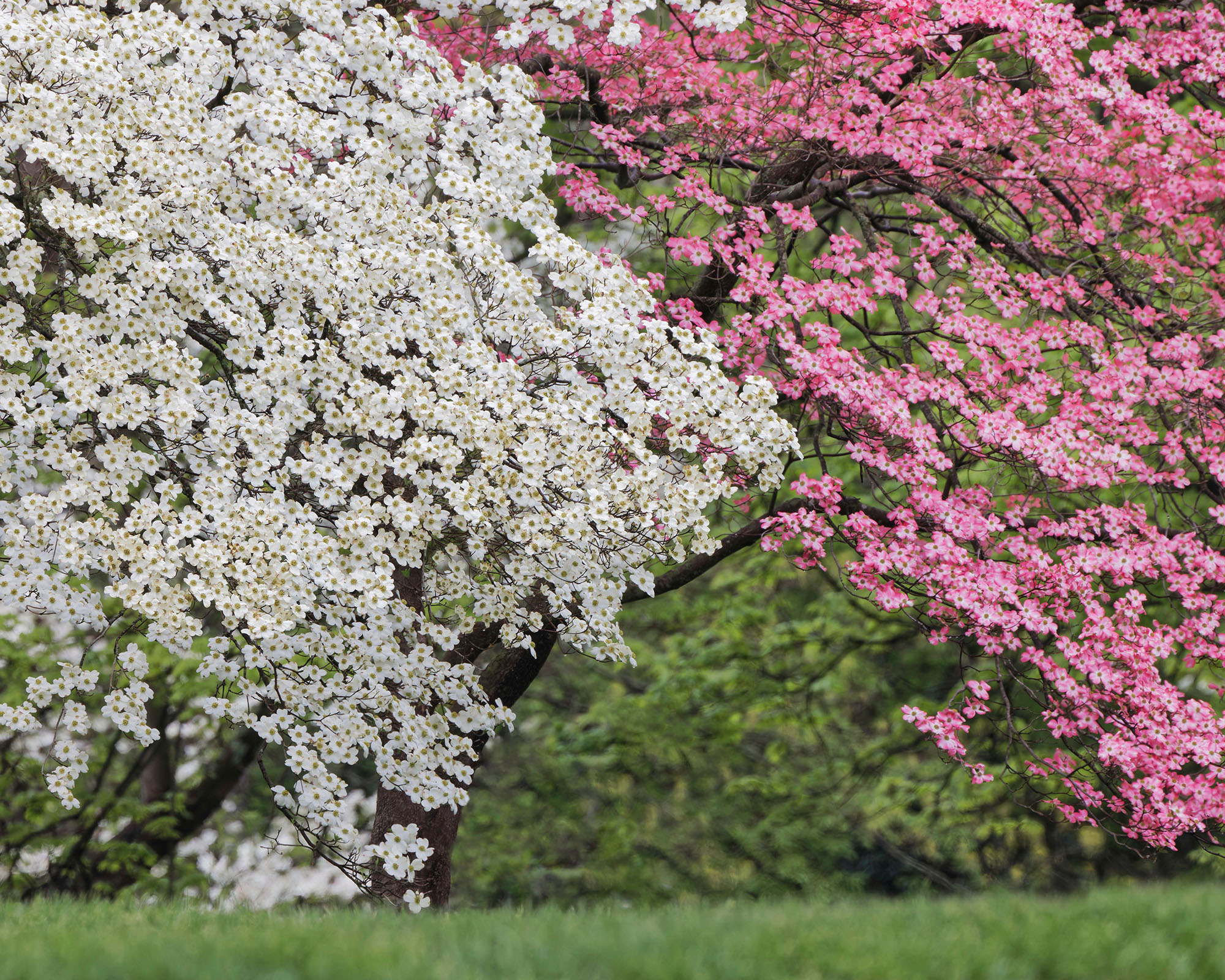
‘If you're looking for a slightly larger tree than the Japanese maple, the flowering dogwood is a great choice that I'd highly recommend,’ says Santiago Flores.
‘It has an amazing spring blossom that features bright flowers that can produce shades of white, pink, and even red.’ It also has striking foliage in the fall.
‘These trees thrive in a moderate climate and are very versatile, making it easy to fit them into many landscape designs.’
‘Dogwood trees also attract birds and butterflies, adding a dynamic and natural element to your garden,’ adds Gene Caballero.
‘Newer varieties of dogwoods are often disease-resistant, making them a valuable and low-maintenance addition to your property.
Dogwood can be grown in USDA zones 5-9 and thrives in partial shade in well-draining humus-rich soil that is slightly acidic.
Caring for dogwood trees is fairly easy, as they require only mild pruning and mulching.
5. Fruit trees
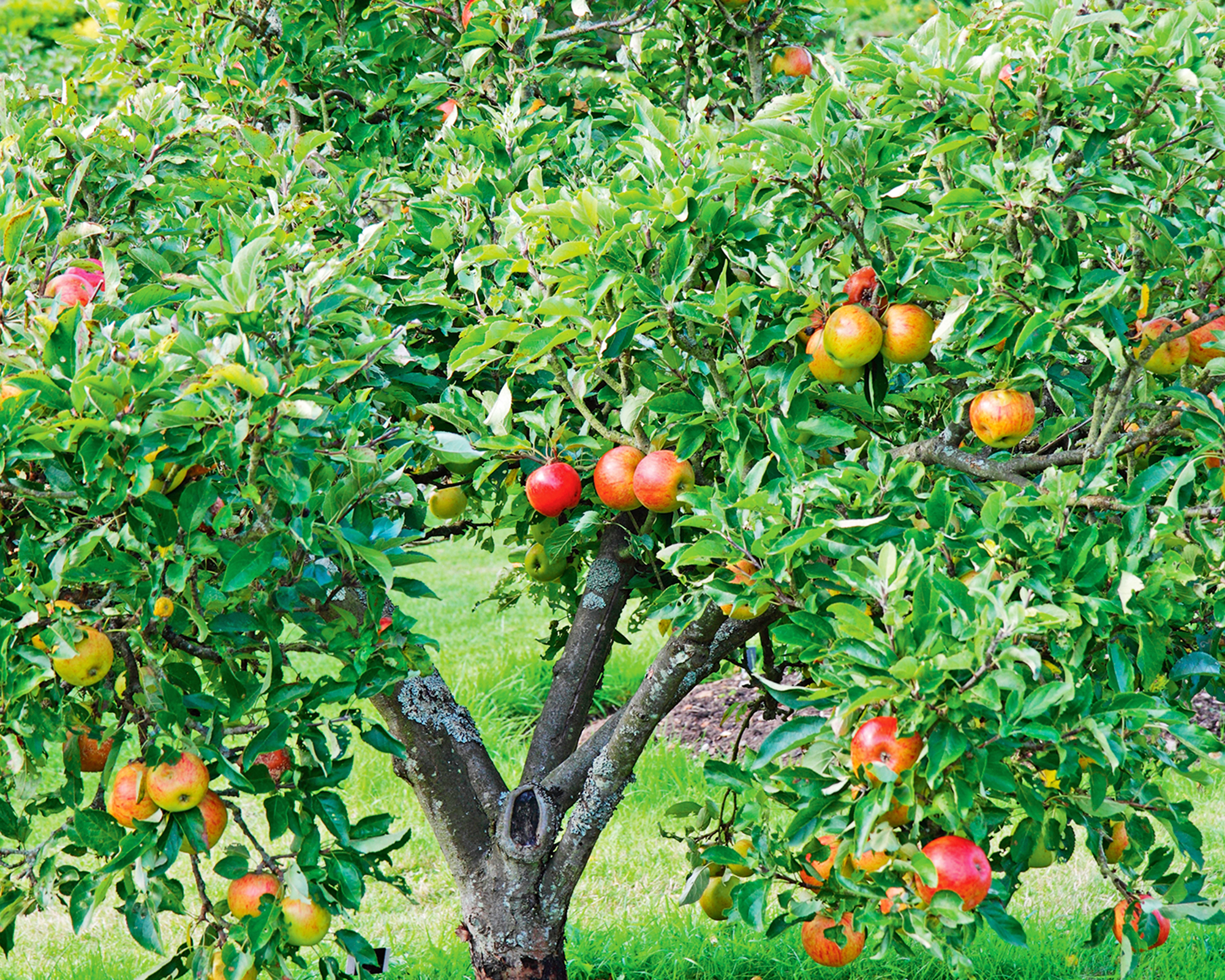
‘Productive trees like fruit trees and nut trees are a big winner when it comes to adding property value,’ says Veronica Sparks. ‘Citrus trees, for example, are a big appeal for homebuyers in warmer climates.’
You can grow lemon trees and orange trees outdoors in USDA zones 9-11, but in cooler zones growing lemon trees in pots is a great option if you overwinter them indoors. You can also grow orange trees in pots if they are dwarf varieties.
Another good fruit tree to add value is the apple tree. Zones 4 to 7 are best for apple trees, but there are zone 9 apple varieties for warmer areas, and cold hardy apples suitable for zone 3.
Plum trees are lovely to grow in hardiness zones 4-9. Cherry trees are another top pick for a beautiful landscaping tree – there are options for zones 4-7, though their roots can be invasive.
‘When growing fruit trees, it's important to keep the area around the tree clean during harvest season as rotting fruits and nuts can attract pests,’ adds Veronica.
6. Magnolia
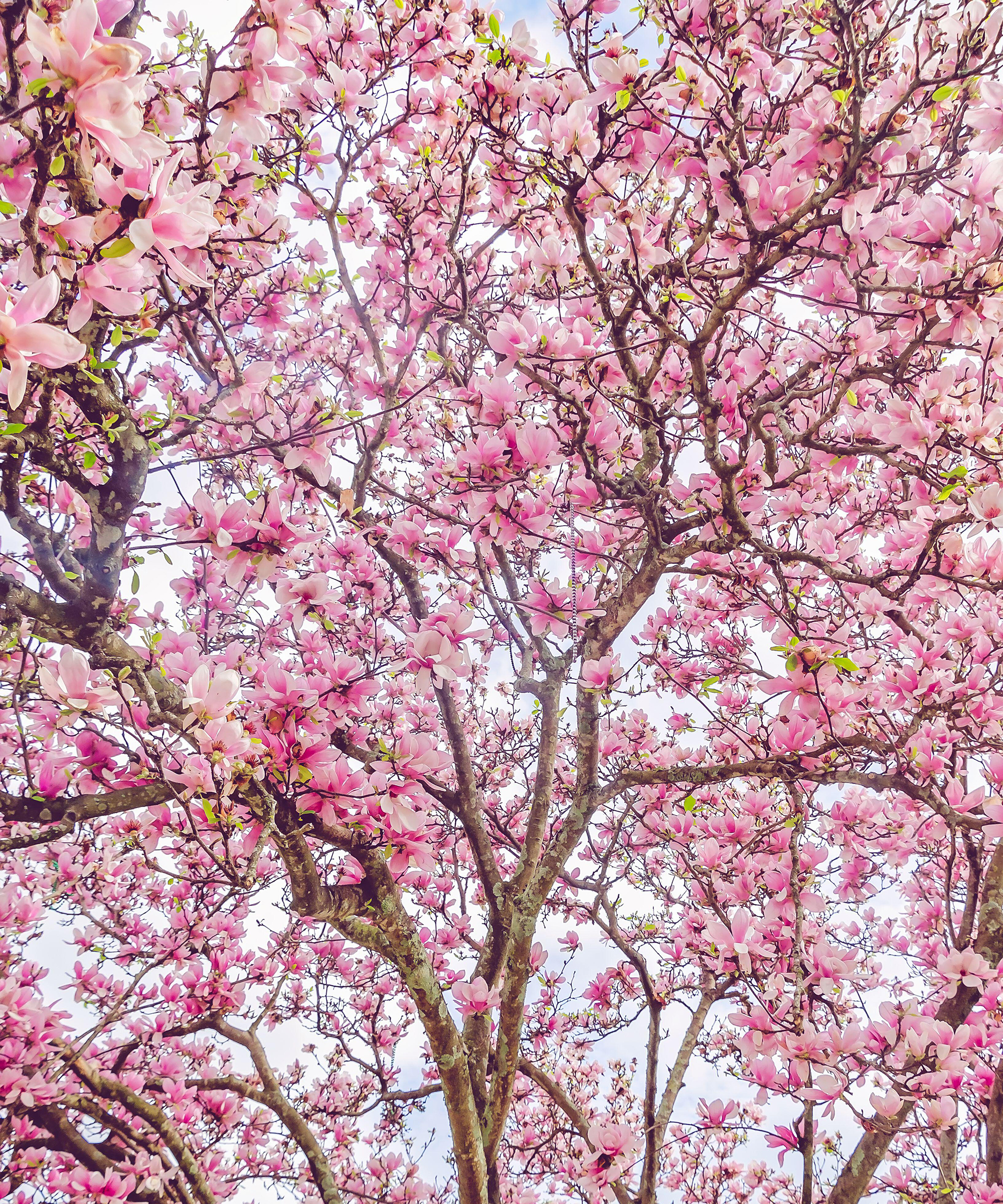
‘Some of the most aesthetic trees that add property value are flowering trees like magnolia,’ says Veronica.
Magnolia trees produce the most stunning flowers in spring to early summer, with delicate white and pink petals that exude a sweet perfume.
These attractive trees also feature glossy, dark green leaves and large, exotic-looking pods that open in fall to reveal bright orange-red berries.
Most magnolia trees can be grown in USDA Zones 7 through 9; however, there are some hardy magnolias that survive winters in zone 6 and 5, and even magnolias for zone 4. There are also options for zone 10.
Depending upon the species, magnolias may be evergreen, semi-evergreen or deciduous. While stunning trees, they are not always low-maintenance, though they don’t require much pruning.
The trees are great options if you have wet soil, which they prefer to be slightly acidic. Keep the tree well watered – especially while it is young.
7. Redbud
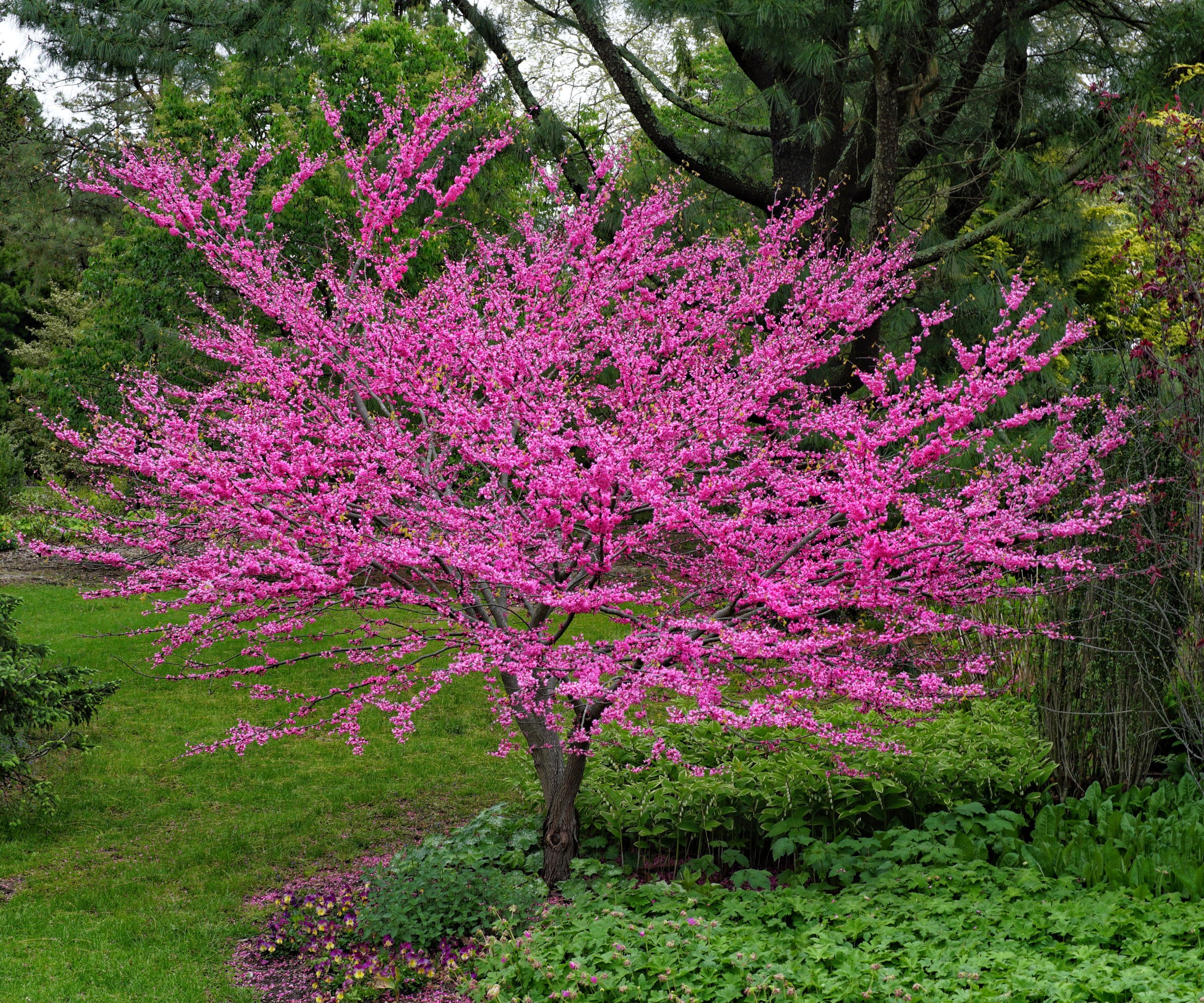
If you are looking for trees for a small yard, then the Eastern redbud (Cercis canadensis) is a fantastic option. They grow fast but stay small – with a maximum mature height of 20-30ft and spread of 15-35 feet.
‘Redbuds provide late-winter color that's hard to come by in a lot of climates across the country and they're very tough and adaptable,’ says Zander Caruso.
Featuring stunning pink flowers, redbuds also have heart-shaped leaves that look beautiful after the blooms have faded.
They are widely known as Judas trees, due to a belief that Judas Iscariot hanged himself from a tree of this species, causing the flowers to turn from white to red.
Gardeners commonly grow redbud trees in naturalized or woodland areas, but they also work well in a shrub border or as a specimen tree.
They need full sun or part shade, and work well planted under the canopy of larger trees. Redbuds are hardy in USDA zones 4-9.
8. Desert willow
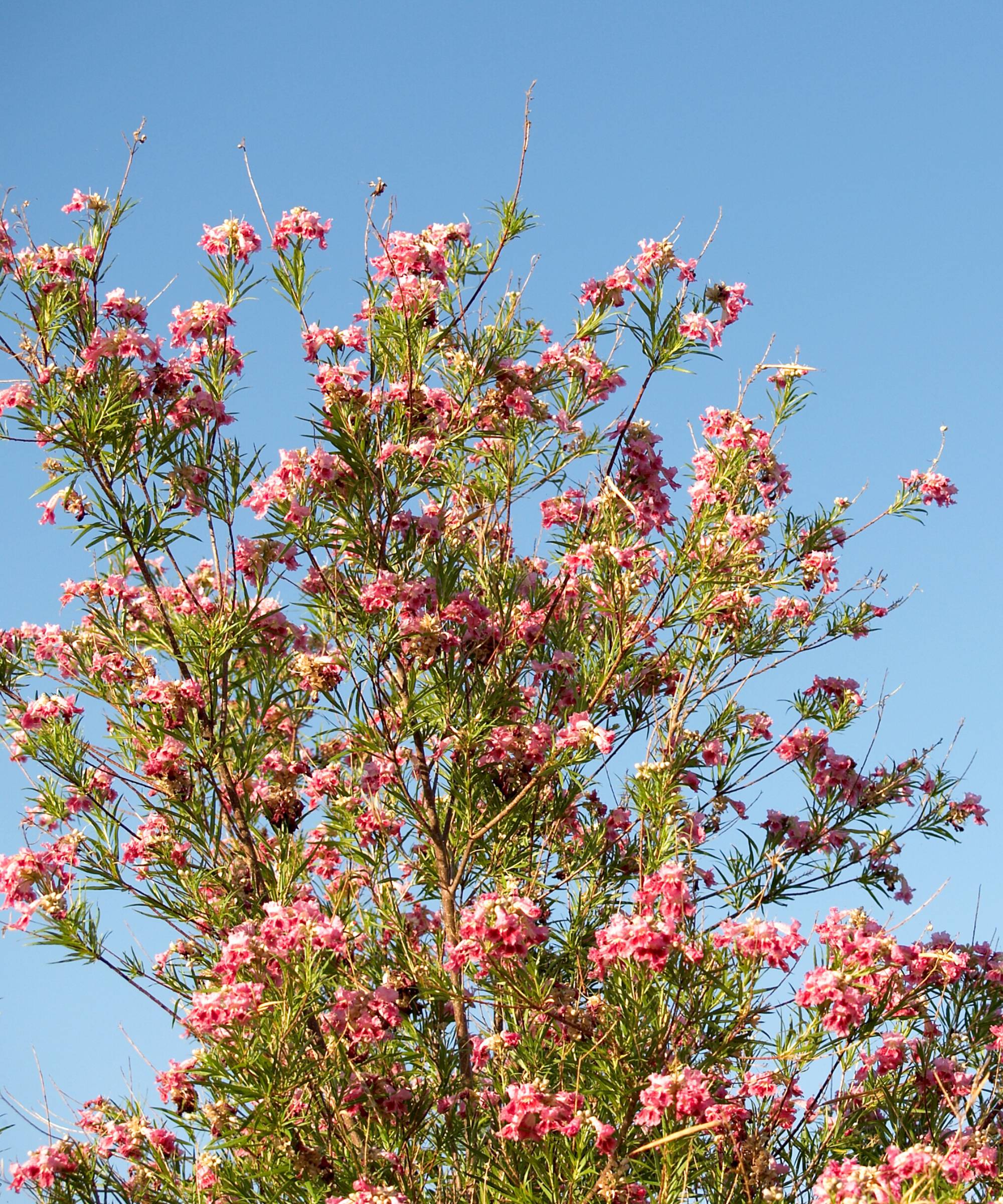
The desert willow (Chilopsis linearis) is another gorgeous choice for smaller yards. While many types of willow have invasive roots, the desert willow is actually a different species. It has non-invasive roots, and fairly compact proportions of up to 30ft tall and 25ft wide.
‘It makes a fantastic ornamental tree that blooms from spring to fall and is also drought tolerant once established,’ says Zander Caruso.
The tree's fragrant trumpet-shaped flowers can be found in shades of pink, violet, and white. All have yellow throats.
Desert willows are hardy in zones 7b through 11, and are ideal for planting in groups as a privacy screen or windbreak. They are easy to look after, requiring little pruning and only an occasional deep watering.
9. Japanese lilac tree
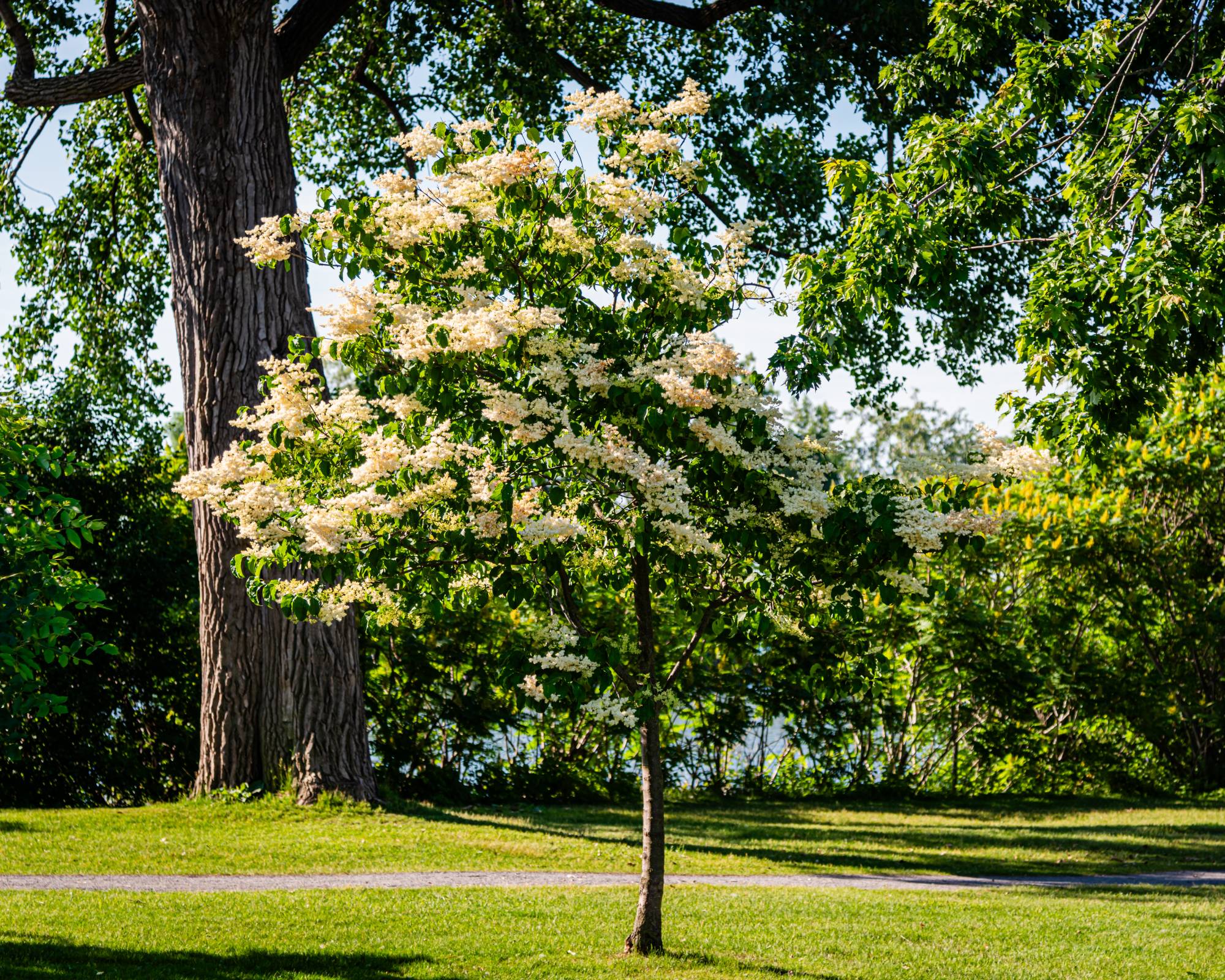
Fragrance can be just as important as appearance when it comes to making an impression with a tree. Unlike the heady scent of common lilac, the Japanese lilac tree has a more subtle yet pleasing aroma.
Plant one near a window to enjoy its white flowers in early summer, and to allow the fragrance to waft indoors. Though, make sure you leave room for the 20ft canopy.
One of the best things about Japanese lilac is that it fills a gap in the garden, flowering when most other trees have either finished or are just budding. After the flowers fade, seed capsules are produced that are attractive to songbirds.
It also tolerates urban pollution well, making it a good choice for more built-up areas.
The trees suffer few problems and have a lovely shape that is easy to maintain and requires minimal pruning. Simply snip away any damage.
Japanese lilacs are suitable for zones 3-7.
10. Yaupon holly
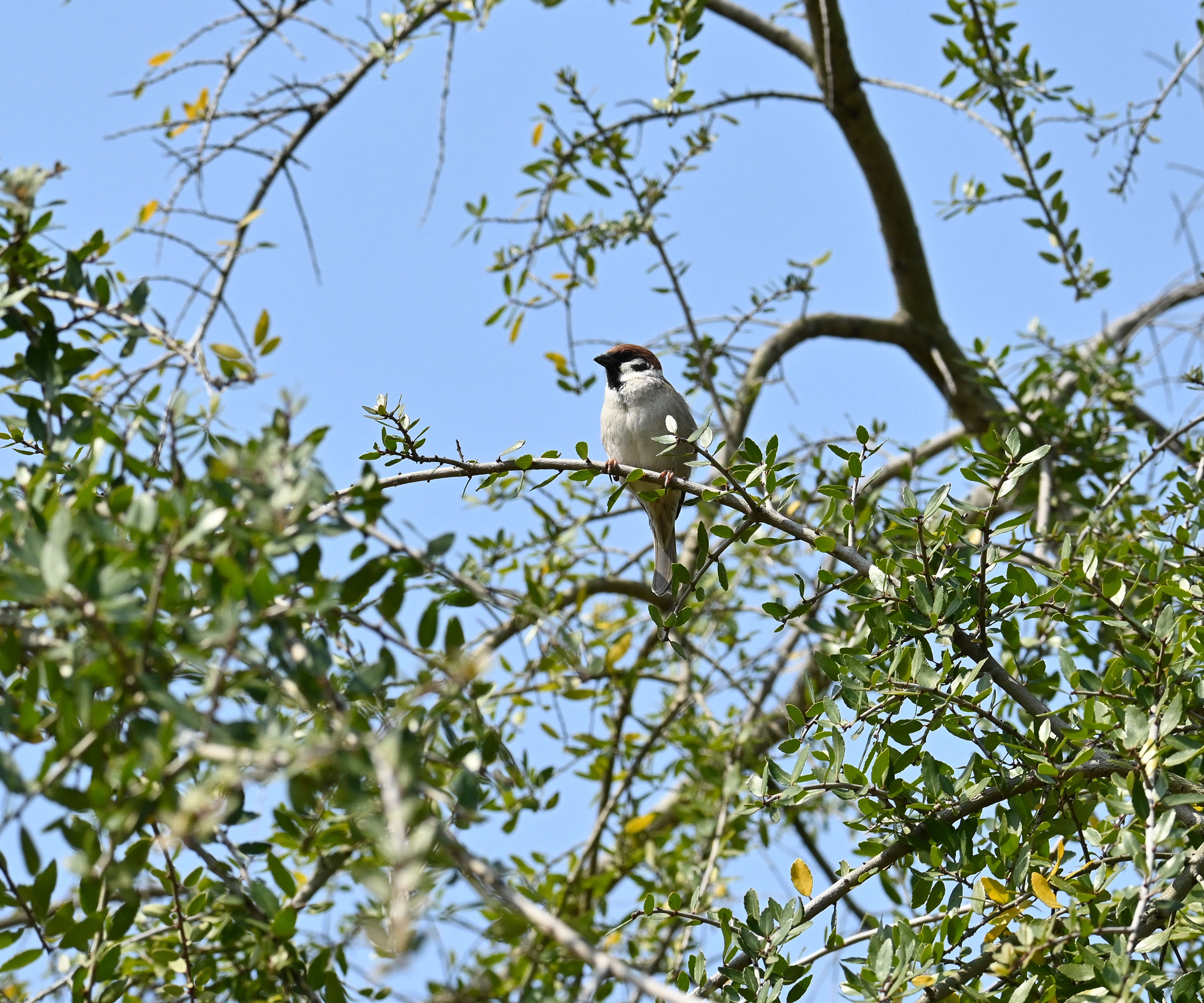
Screening trees are so useful for adding value to a home – providing privacy, shade, and a beautiful natural feature. They also help to define borders.
‘A multifaceted plant I absolutely adore is the yaupon holly (Ilex vomitoria),’ says Zander Caruso. ‘Cultivars range from dwarf sizes to create a small natural fence to 20ft trees such as "Pride of Houston".
‘While slow growing, Ilex vomitoria tolerates sun, shade, drought, and wet feet, and has little issue with diseases and pests. Most cultivars are female, which means they sport vibrant red berries that form in fall and persist through winter.’ Bear in mind you will need a male partner tree to get berries.
Native to the southeastern United States, yaupon holly is hardy in USDA zones 7b through 9.
This article features products available from third party vendors on the Gardening Know How Shop.

Melanie is an experienced gardener and has worked in homes and gardens media for over 20 years. She previously served as Editor on Period Living magazine, and worked for Homes & Gardens, Gardening Etc, Real Homes, and Homebuilding & Renovating. Melanie has spent the last few years transforming her own garden, which is constantly evolving as a work in progress. She is also a passionate organic home grower, having experimented with almost every type of vegetable at some point. In her home, Melanie tends to an extensive houseplant collection and is particularly fond of orchids.
- Amy DraissDigital Community Manager